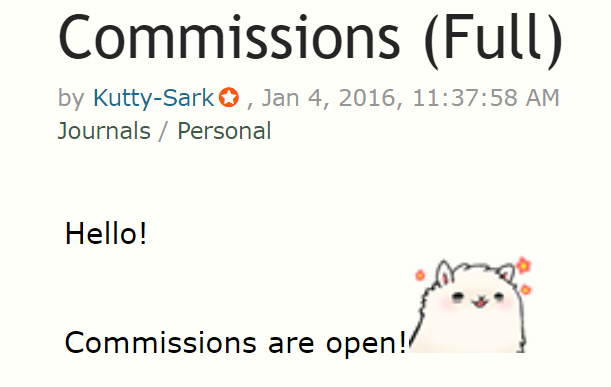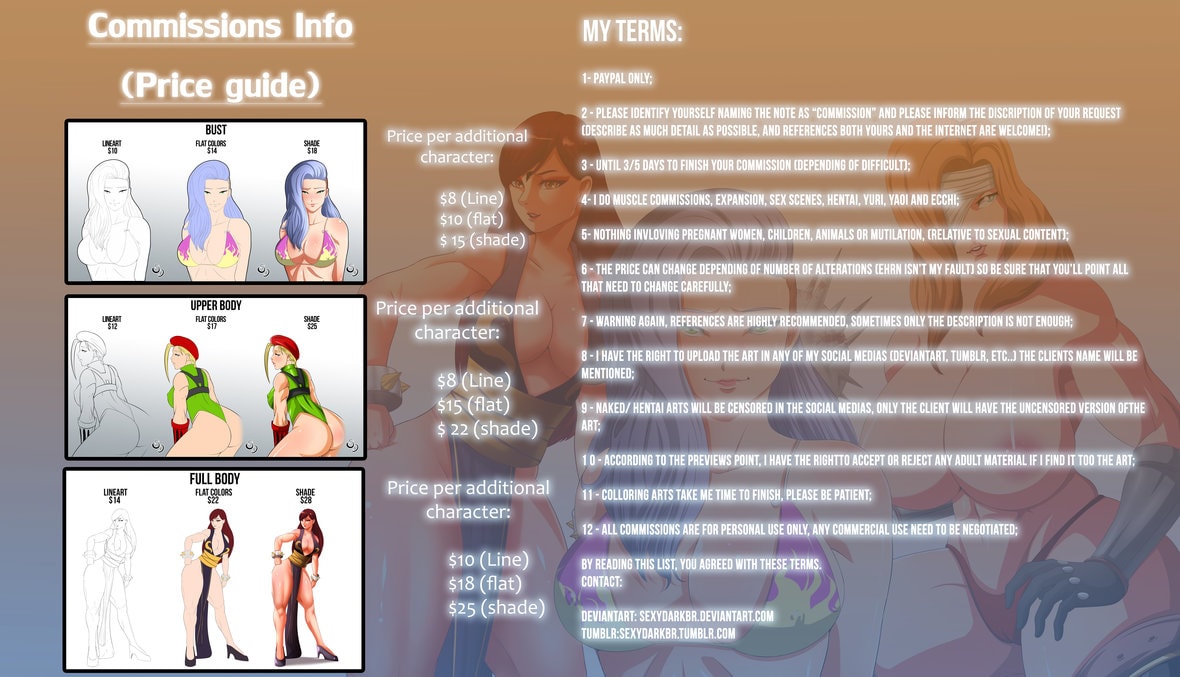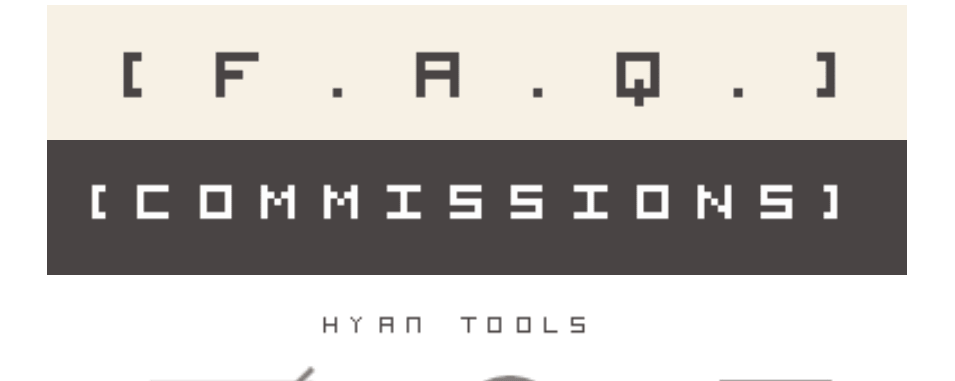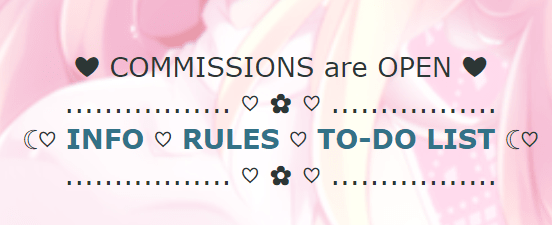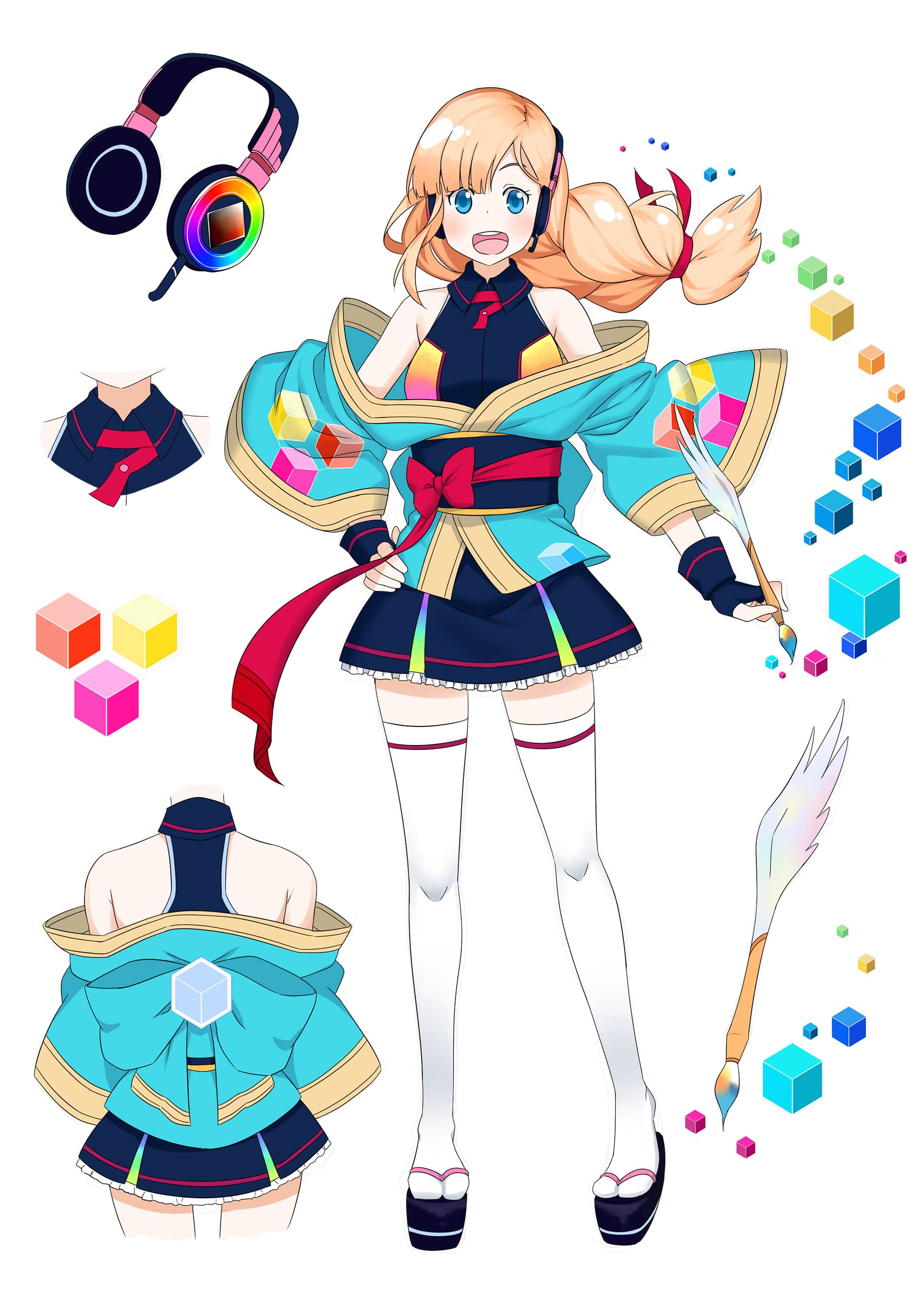Understanding Commissions
The current market for commissioning art and solving common problems in this industry.
Commission
/kəˈmiSHən/ – verb
“give an order for or authorize the production of (something such as a building, piece of equipment, or work of art).”
Commissions are everywhere
How are artists handling commissions?
Artists usually have a “commission” section on their DeviantArt profile.
There is no built in “commission” widget on DeviantArt, so artists are usually making a one time post image with commission info (not SEO friendly) or updating some HTML file on their DeviantArt embed section (not beginner friendly).
As you can see on the attached screenshot, some artists are even using Trello as a waiting list or progress list for their incoming commissions.
Most artists handle payments via PayPal and believe they are protected from theft or disputes. However, “intangible goods” is specifically listed on PayPal’s policy page as not being covered by their seller protection program.
Some artists who can’t accept PayPal in their country, have opted to using DeviantArt points as a form of payment.
What is important to note here is even the advertisement or listing of commissions on artist’s profiles is non-standard and sometimes difficult for outsiders to access.

The Commission Market
Due to the non-standardized nature of commissions, it is very difficult to actually gauge a real market value for commissions. What is important to note about commissions is that it’s sort of like a “coming of age” culture with artists.
When artists feel they have achieved a certain level of skill, that is when they begin to value their own work and start putting their skills on the market for buyers to commission them.
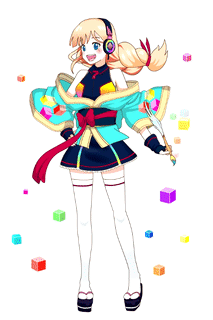
How is Price Determined for Commissions?
Artists from different skill levels and countries have varying prices, anywhere from $5 per artwork to $1,200 per art piece.
Another factor that impacts price is whether the art is for “commercial use” or not. Many professional level artists will charge an additional fee for transferring commercial rights or the full copyright of the final work to a client.
Other factors that impact the price of a commission:
- The pixel size of the finished artwork
- The level of detail required
- The level of creative work required: has the client defined the project well or is this up to the artist to creatively decide?
- The content of the art: multiple characters, head shot, background, etc.
- The artist’s skill level or artist’s self value or time
- The due date for the finished art: rush delivery vs. artist’s convenience
- Politics: How well do you know the artist, have you referred them work in the past, are they getting a cut of the profits, etc.
Why do people order commissions?
- Personal use: draw themselves as an anime character for fun
- Twitch / Discord emojis
- Original Character designs, commonly referred to as “OC”
- OC’s are used for indie manga, video games, or other projects
- Music album art covers
- For the sake of supporting the artist (non-commercial end use / bragging rights)
- Other: social media banner, thumbnails, ads, etc.
I would put an emphasis on commercial use cases for where the big money in commissions lay. Commercial projects want quality art, quality artists charge higher prices. Generally commercial projects have ongoing or frequent art requests. The market use case for commercial art and monetary value is the highest of all reasons to commission an anime artist.
The Commission Process
The unspoken rule of commissions

There is no standardized commission process, every artist has their own workflow or policy. Having commissioned many artists both for personal and commercial projects, I have developed an understanding for an effective standardized process that all artists should apply to their professional work.
Phase 1: Sketch Phase
This is the most basic, low effort “mockup” for the final image. It is at this phase that both the artist and the client should decide if they want to seriously proceed with the project or not.
A rough sketch requires little effort on the part of the artist and is the equivalent of a web designer making a low res mockup for a project.
A professional artist should not charge for this part of the commission as it is the job of both parties to demonstrate a full understanding of the project, give a rough idea, and decide whether or not to proceed.
The purpose of the initial sketch is for the artist to demonstrate that they understand the concept the client is trying to communicate to them. The client should also use this opportunity to decide if the artist has actually understood their concept, request changes, etc.
Phase 2: Line Art
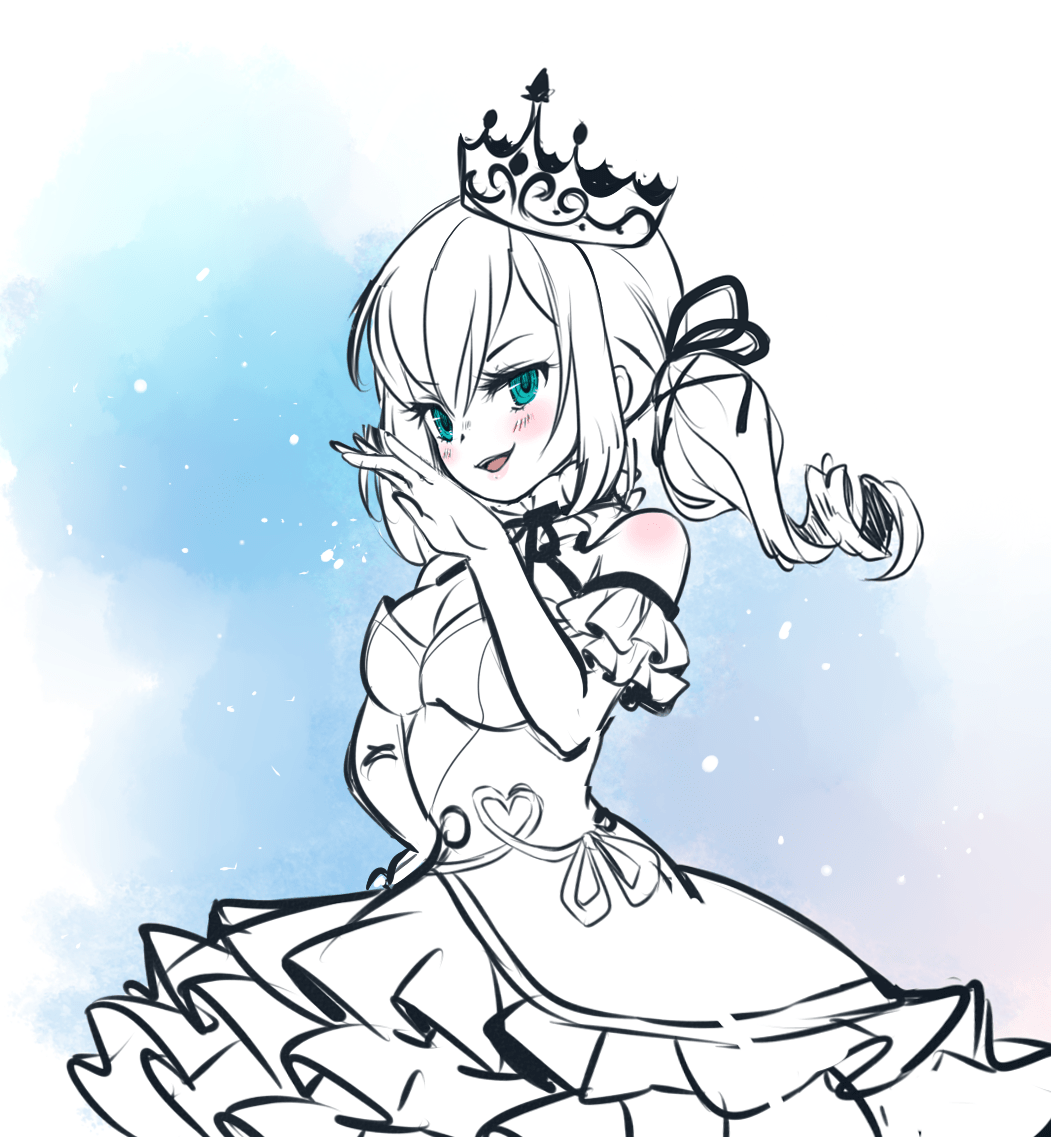
The “line art” is the solidified lines in the drawing. These lines are no longer considered “sketch” as they will be made in accordance to how the final drawing will turn out. The lines may appear incredibly thin or thick depending on the style of the drawing and artist.
It is as this point that the project becomes “set in stone” and the artist should either receive payment prior to line art phase or immediately after. The payment terms depending upon the total cost can either be all up front or 50/50.
Once the line art has been completed, the client should not ask for changes to the art relating to the overall structure or lines of the art. If the client requests a change in the pose of the character, then this requires the line art to be modified. Such changes need to be hashed out during sketch phase.
Phase 3: Initial Color Decision

At this point, we are concerned with ensuring the appropriate colors are used. The artist may submit a very rough idea of colors to be used in the final design.
If this was an original character design, the artist should ideally submit a few ideas or different color choices to make the decision easier for the client.
If the client has basic Photoshop skills, they can also modify the colors themselves and explore ideas that they like.
Again, at this point no lines or structure of the art should be changing, only basic color decisions.
If the client changes their mind about a pose or anything requiring new lines, reasonable additional costs should be passed on to the client.
There needs to be heavy back and forth between the artist and client at this stage, because once the colors are settled on, the rest is up to the artist to complete.
Phase 4: Finishing Touches
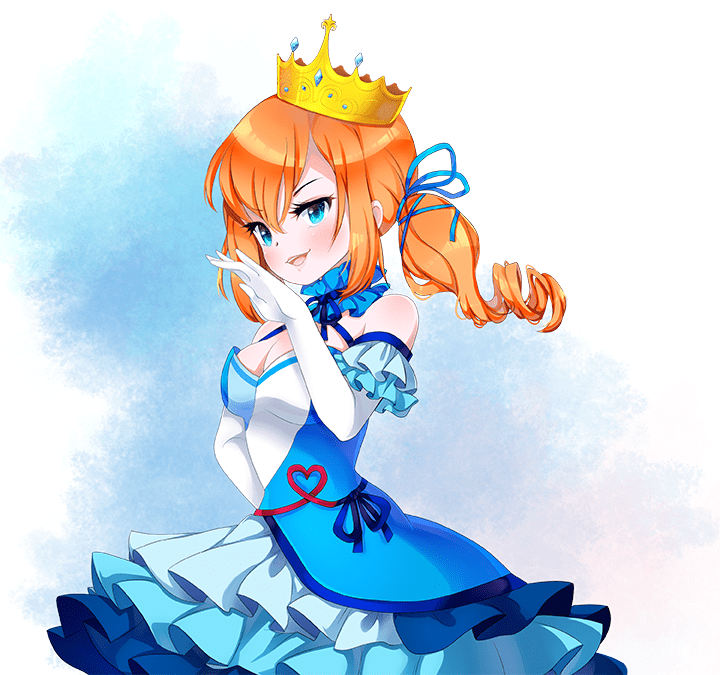
The artist will apply their unique style and skills to polish up the final piece and complete it.
Assuming both the artist and the client had been in agreement up until this phase, the finished art should be exactly what the client was looking for.
If the client is unhappy with the finished artwork for some reason, and assuming the artist applied the same quality and level of detail that they have done on previous portfolio work, then the fault will lay with the client for not being clear with their end vision.
If any final payment needs to be made, the client should submit the final payment after approving the finished artwork and the artist should submit the high resolution files or PSD files to the client upon receipt of final payment.
Both parties should be happy at this point and prepared to move on.
A Natural Flow
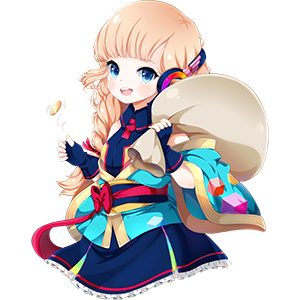
The solution is to adapt to how artists naturally create artwork, and develop a commission flow around that existing process. I have merely parsed the natural art creation process into manageable phases.
Where does this leave us?
We understand that:
- There is no formalized process for advertising or hosting commissions, whether it be on DeviantArt, PayPal, Facebook, etc.
- There is no standardized procedure in which both the client and artist can easily follow to ensure satisfaction from both parties
- There is no dedicated platform (as far as I’m aware) specifically dedicated to the process of commissioning art in a safe and effective manner.
- Commissions are a very common practice in the anime art community, and sometimes the main source of income for anime artists.
- Commercial commissions hold the highest value in terms of types of commissioned projects.
The solution: The AnimeCoin Art Exchange Platform
Using the knowledge and past experience I have commissioning hundreds of pieces of art, I want to design a platform that artists can unite around and that makes it easy for commercial clients to approach, communicate with, and securely pay for original artwork.
– Andrew Taraba




